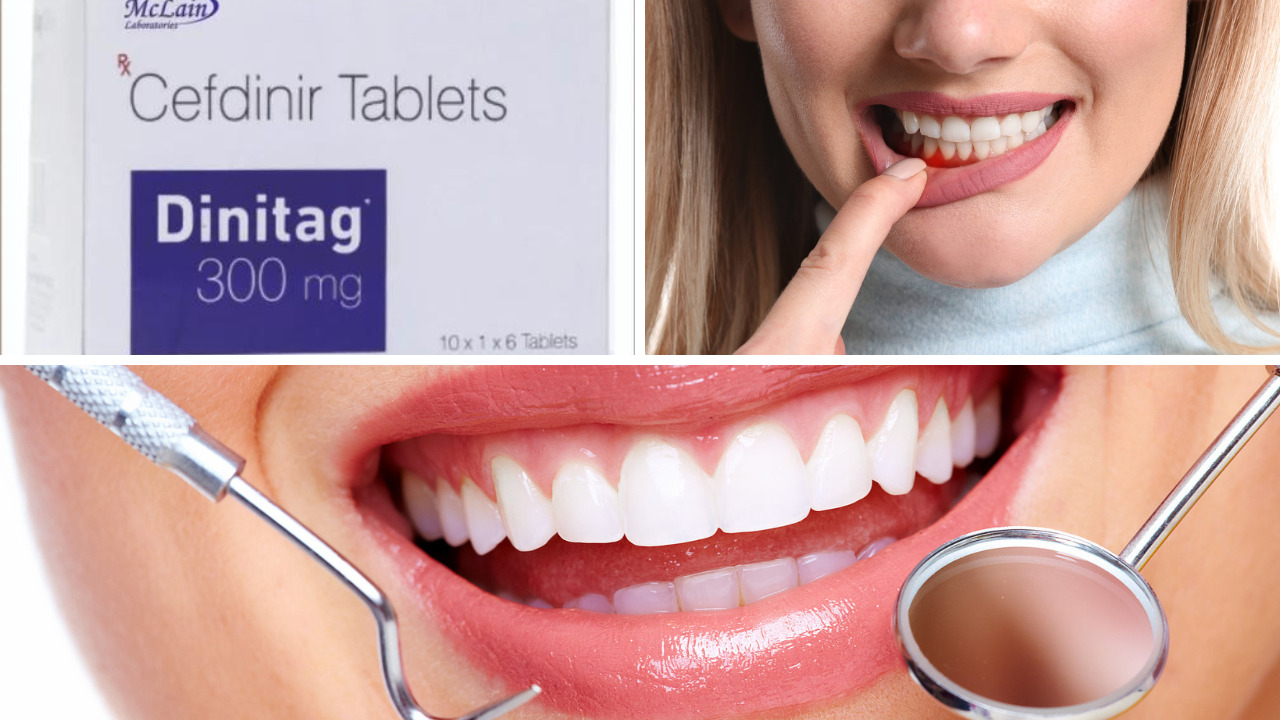When it comes to dental issues, a tooth infection can be one of the most excruciating and bothersome problems to deal with. The pain and discomfort associated with a tooth infection can significantly affect your daily life.
However, there are effective treatments available to alleviate the pain and promote healing, one of which is Cefdinir 300 mg. In this comprehensive article, we will explore the role of Cefdinir in treating tooth infections, its benefits, proper usage, and more.
Understanding Tooth Infections
Before delving into the specifics of Cefdinir, it’s crucial to understand what a tooth infection is and how it develops. A tooth infection, also known as a dental abscess, occurs when harmful bacteria enter the pulp (the innermost part of the tooth) through a cavity or crack in the tooth. The bacteria multiply, leading to the formation of pus and causing severe pain, swelling, and even fever in some cases.
Tooth infections can be excruciating and may require prompt medical attention to prevent further complications. Common symptoms of a tooth infection include:
- Intense toothache
- Swelling of the face or jaw
- Sensitivity to hot or cold temperatures
- Fever and fatigue
The Role of Cefdinir 300 mg
Cefdinir 300 mg is an antibiotic that belongs to the cephalosporin class of medications. It is known for its effectiveness in treating various bacterial infections, including those of the oral cavity. When prescribed by a healthcare professional, Cefdinir can be a valuable tool in combating tooth infections.
How Cefdinir Works
Cefdinir works by interfering with the growth and reproduction of the bacteria responsible for the tooth infection. It does this by targeting the bacterial cell walls, weakening them, and ultimately leading to their destruction. This mechanism of action makes Cefdinir an effective weapon against the harmful bacteria causing your toothache.
Benefits of Cefdinir for Tooth Infections
- Fast Pain Relief: Cefdinir starts working quickly to alleviate the excruciating pain associated with tooth infections, allowing you to feel more comfortable within a short time.
- Infection Control: By targeting the root cause of the infection, Cefdinir helps prevent the spread of bacteria to other parts of your mouth and body.
- Reduction in Swelling: Cefdinir can significantly reduce the swelling and inflammation that often accompanies tooth infections, providing relief and promoting healing.
- Minimal Side Effects: When taken as prescribed, Cefdinir typically has minimal side effects, making it a well-tolerated option for most patients.
Proper Usage of Cefdinir
To ensure the effectiveness of Cefdinir in treating your tooth infection, it’s crucial to follow your healthcare provider’s instructions carefully. Here are some essential guidelines for using Cefdinir:
- Dosage: Take Cefdinir exactly as prescribed by your dentist or physician. The typical recommended dose for adults is Cefdinir 300 mg, taken twice daily.
- Complete the Course: Even if your symptoms improve before finishing the prescribed course, it’s essential to complete the entire treatment regimen. This helps ensure that all bacteria causing the infection are eradicated.
- Timing: Take Cefdinir with food to enhance absorption and reduce the risk of stomach upset.
- Avoid Alcohol: While taking Cefdinir, it’s best to avoid alcohol, as it may decrease the effectiveness of the medication.
- Consult Your Healthcare Provider: If you experience any severe side effects or your condition worsens, contact your healthcare provider immediately.
FAQs for Cefdinir 300 mg for Tooth Infection
Q1: What is Cefdinir 300 mg used for in treating tooth infections?
A1: Cefdinir 300 mg is an antibiotic medication commonly prescribed by healthcare professionals to treat various bacterial infections, including tooth infections. It works by killing or inhibiting the growth of bacteria responsible for the infection.
Q2: How should I take Cefdinir 300 mg for a tooth infection?
A2: Take Cefdinir 300 mg as prescribed by your healthcare provider. Typically, it’s taken orally with or without food. Follow the recommended dosage and duration of treatment to ensure the infection is properly treated. Do not skip doses or stop taking it early, even if you feel better.
Q3: What are the possible side effects of Cefdinir 300 mg when used for a tooth infection?
A3: Common side effects of Cefdinir 300 mg may include diarrhea, nausea, vomiting, abdominal pain, and rash. Contact your healthcare provider if you experience severe diarrhea, watery or bloody stools, or any unusual side effects. Allergic reactions are rare but possible, so seek immediate medical attention if you develop symptoms like itching, swelling, or difficulty breathing.
Q4: Can I drink alcohol while taking Cefdinir 300 mg for a tooth infection?
A4: It’s generally recommended to avoid alcohol while taking Cefdinir 300 mg. Alcohol may reduce the effectiveness of the medication and increase the risk of side effects. Consult your healthcare provider for specific guidance on alcohol consumption during your treatment.
Q5: How long should I take Cefdinir 300 mg for a tooth infection?
A5: The duration of Cefdinir 300 mg treatment for a tooth infection will be determined by your healthcare provider. Typically, antibiotics are prescribed for 7-10 days, but it can vary depending on the severity of the infection. Follow your provider’s instructions and complete the full course of antibiotics even if you start feeling better before it’s finished. This helps ensure that the infection is completely eradicated.
Q6: Can Cefdinir treat a tooth infection?
A6: Yes, Cefdinir is an antibiotic that can be used to treat a tooth infection. It is prescribed by a healthcare provider to combat bacterial infections in the mouth.
Q7: How long does Cefdinir take to treat a tooth infection?
A7: The duration of Cefdinir treatment for a tooth infection can vary depending on the severity of the infection and your individual response to the medication. Typically, it’s prescribed for 5 to 10 days, but it’s important to follow your dentist or doctor’s specific instructions.
Q8: How to properly treat a tooth infection?
A8: Proper treatment of a tooth infection typically involves antibiotics like Cefdinir, good oral hygiene practices, and in some cases, dental procedures such as root canals or tooth extractions. It’s crucial to consult with a dentist for a personalized treatment plan.
Q9: What over-the-counter medications are used for a tooth infection?
A9: Over-the-counter medications may help manage the pain and discomfort associated with a tooth infection, but they do not treat the infection itself. Pain relievers like acetaminophen or ibuprofen can provide temporary relief, but it’s essential to seek professional dental care for proper treatment.
Q10: How to know you have a tooth infection?
A10: Common signs of a tooth infection include severe toothache, swelling of the face or gums, fever, a foul taste in the mouth, and sensitivity to hot or cold temperatures. If you experience these symptoms, it’s crucial to see a dentist promptly for a proper diagnosis and treatment.
for more information visit us at our website
Conclusion
In summary, Cefdinir 300 mg is a valuable and effective option for treating tooth infections. Its ability to provide rapid pain relief, control infection, reduce swelling, and have minimal side effects makes it a top choice for many individuals suffering from dental abscesses.
If you suspect you have a tooth infection, it’s crucial to seek professional dental care promptly. Your dentist or physician can evaluate your condition and determine the most appropriate treatment plan, which may include Cefdinir.







Write a comment
Your email address will not be published. All fields are required